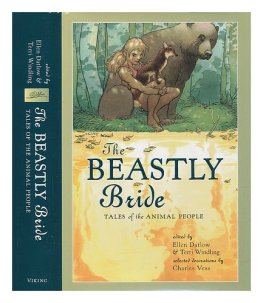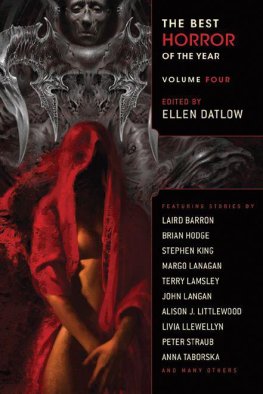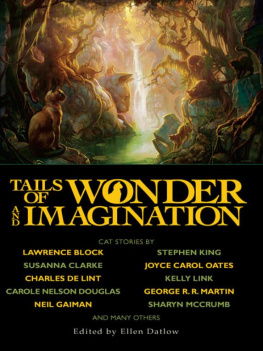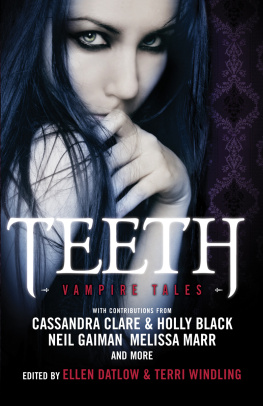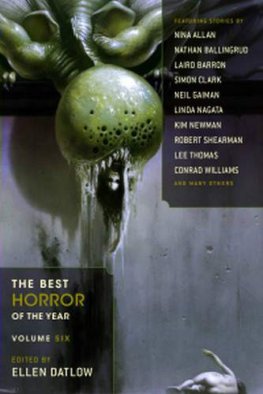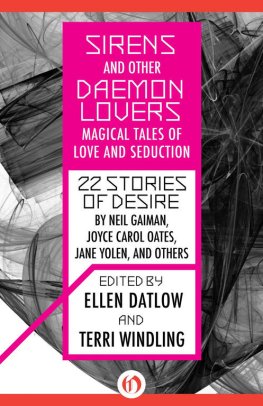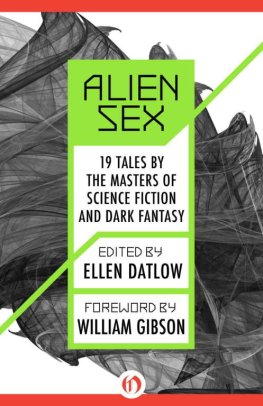The Beastly Bride
Tales of the Animal People

Edited by Ellen Datlow & Terri Windling
Introduction by Terri Windling
Selected decorations by Charles Vess
Other Anthologies by
Ellen Datlow & Terri WindlingThe Adult Fairy Tale Series
Snow White, Blood Red
Black Thorn, White Rose
Ruby Slippers, Golden Tears
Black Swan, White Raven
Silver Birch, Blood Moon
Black Heart, Ivory Bones
The Green Man: Tales from the Mythic Forest
The Faery Reel: Tales from the Twilight Realm
The Coyote Road: Trickster Tales
A Wolf at the Door
Swan Sister
Trolls-Eye View
Salon Fantastique
Sirens
The Years Best Fantasy and Horror Volumes 1 through 16
For Charles de Lint and MaryAnn Harris, who know the Animal People better than most, with thanks for all you do to keep magic alive.
E.D. &T.W.
PREFACE

Ellen Datlow & Terri Windling
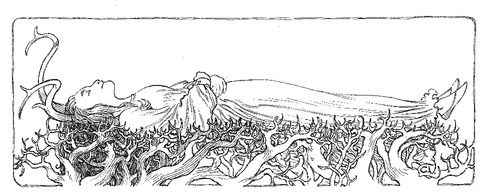
Werewolves, vampire bats, fox demons, the Animagi in the Harry Potter books, and Beast Boy/Changeling in the Teen Titans comics. What do all these characters have in common? They are shape-shifters. More specifically, they are therianthropic figures, capable of transforming between human and animal shape. And as such, they are part of a mythic tradition as old as storytelling itself.
Although the werewolf is undoubtedly the best-known human-to-animal shape-shifter in popular culture today, when we turn to world mythology we find that transformation legends are attached to almost every kind of animal as well as to a wide variety of birds, fish, reptiles, and even insects. Shape-shifting can be voluntary, as in the many stories of witches who turn into hares, owls, or turkeys (yes, turkeys!). Or it can be involuntary, like the men in The Odyssey who are turned into swine by Circe. In some mythic traditions, the Animal People (with human and animal characteristics intermingled) were the first inhabitants of the earth, from whom all two-legged and four-legged beings have descended. In other traditions, only certain special people can claim such mixed-blood ancestry Siberian shamans descended from swans, for example, or Irish wisewomen with seal blood in their veins, or Malaysian animist priests who honor the tiger as their ancestral spirit. The therianthropic tales of myth can thus be divided into three (overlapping) strains: stories of gods, men, and supernatural creatures who shape-shift between animal and human forms; stories of those who have been transformed from one state to another against their will; and stories of animal-human hybrids whose bodies and natures reflect both worlds.
In this book, youll find stories inspired by animal transformation legends from around the world, retold and reimagined by some of the very best writers working today. Were defining animal loosely here, for in addition to stories of bears, cats, rats, deer, and other four-footed creatures we have birds, fish, seals, a fire salamander, and a yetis child. In myth, many therianthropic tales involve the marriage of a human man or woman to an animal or animal-like monster. and so there are also some wonderful beastly brides (and bridegrooms) in the pages ahead.
The Beastly Bride is the fourth installment in our mythic fiction anthology series, each volume dedicated to a different aspect of world mythology. In previous volumes, weve explored the legends of the forest, the folklore of faeries, and trickster tales. This time, we follow deer tracks through the snow, wrapped up in cloaks of feathers and fur. As the moon starts to rise, the edges of the world start to shift and blur.
Lets go.
INTRODUCTION: SHAPE-SHIFTERS, WERE-CREATURES, AND BEASTLY SUITORS

Terri Windling
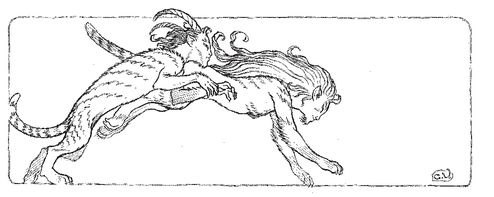
Who among us hasnt wondered what it would be like to see the world through an animals eyes? To lope across the landscape as a wolf, fly above the trees on the wings of a crow, leap through the waves with a porpoises grace, snooze winter away in a bear cubs den?
Many books for young readers explore the common childhood desire to run wild with the animals, from Rudyard Kiplings The Jungle Book to Maurice Sendaks Where the Wild Things Arebut even better than dancing with the wolves would be to have the power to become an animal oneself. T. H. White tapped into this fantasy in his Arthurian classic, The Once and Future King. Here, Merlin educates the young Arthur by transforming him into a badger, a fish, an owl, an ant, et cetera; and Arthur must learn to live as they live, gaining knowledge, even wisdom, in the process. This isnt a standard part of the Arthur myth, but White hasnt made it up from whole cloth either. Hes drawn on a worldwide body of tales even older than Arthur mythos: tales of shape-shifting, therianthropy (animal-human metamorphosis), and shamanic initiation.
Animal-human transformation stories can be found in sacred texts, myths, epic romances, and folktales all around the globe, divided into three (overlapping) types. First, there are stories of immortal and mortal beings who shape-shift voluntarily, altering their physical form at will for purposes both beneficent and malign. The second kind of story involves characters (usually human) who have their shape changed in voluntarily generally as the result of a curse, an enchantment, or a punishment from the gods. The third type of story concerns supernatural beings who are a blend of human and animal; they have the physical and mental attributes of both species and belong fully to neither world. Animal bride and bridegroom stories (in which a human man or woman is married to an animal, or an animal-like monster) can fall under any of these three categories: the animal spouse might be a shape-shifter, or an ordinary mortal under a curse, or a creature of mixed blood from the animal, human, and/or divine realms. There are so many beastly brides and bridegrooms in the traditional stories of cultures worldwide that well look at the archetype in more depth a little later on.
Right now lets start, as a number of mythic traditions do, with the gods, goddesses, and supernatural creatures who have both animal and human characteristics. Ancient Egyptian myth, for example, features several important deities with human bodies and the heads of birds or beasts. Ra, god of the sun, has the head of a hawk; Horus, the sky god, the head of a falcon; Thoth, god of wisdom, the head of a baboon; and Anubis, lord of the afterlife, the head of a dog or jackal. The Great Mother Hathor is part woman and part cow; the pleasure-loving goddess Bastet has the visage of a cat; and, most striking of all, the river god Sobek has the head of a crocodile.
In Greek myth, the goddess Artemis has been pictured with the head of a bear in her aspect of Lady of the Beasts. Young girls in her cult pledged service to the goddess somewhere between the ages of five and ten, wearing bear-skins and living as wild as cubs before entering adulthood and marriage. Pan, the Greek god of the wilderness, has an upper body shaped like a mans, and the horns and the lower body of a goat. He is the leader of the satyrs, goatlike spirits of the forest famed for their wild and lecherous behavior. Cernunnos, the woodland god of Celtic lore, has the body of a man and the head of a stag; he is an elusive figure of the wilderness, associated with both fertility and death. Aroui, a dog-headed god, is lord of the forest in Yoruban tales, which spread from Africa to Cuba and Brazil along the old slaving routes. The Jaguar God of the Mayans can appear as a man, as a jaguar, or as a cross between the two. He is associated with the dark magic of shamans across Central and South America. In Hindu myth, the trickster god Ganesh has the head of an elephant with a single tusk and a potbellied human body with four hands. Revered as the Remover of Obstacles, he is often pictured riding on a rat. Coyote and Hare, immortal tricksters in tales told across North America, are sometimes animals, sometimes animal-human hybrids, and sometimes disguised as handsome young men. In the latter form, they seduce pretty girls and cause all manner of trouble for human beings.

